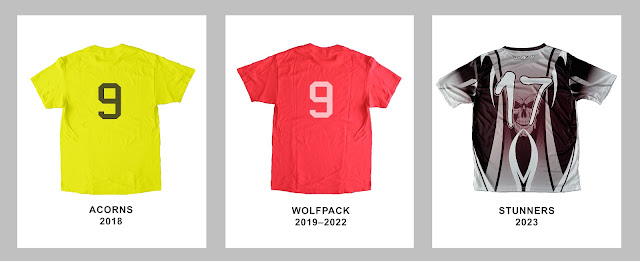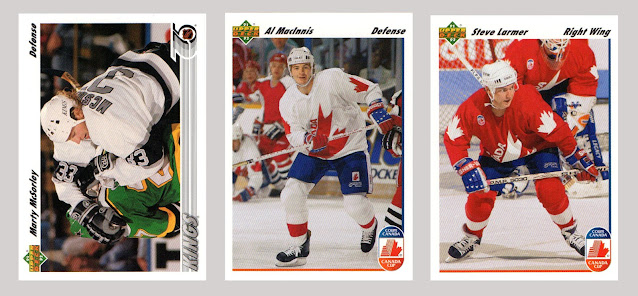 |
| 1975-76 Topps #150, Darryl Sittler |
If you were a hockey-loving kid opening packs of cards on February 8th, 1976, and pulled the card above, you would have let out a big cheer.
Why?
The night before, Darryl Sittler scored 6 goals against the Boston Bruins in an 11–4 win for the Maple Leafs. Add 4 assists to his scoresheet, and you'll find that Sittler contributed to 10 of his team's 11 goals.
There was no way you were trading that card at school the next day. (Or maybe you do try and trade it—you'd be sure to get a haul in return.)
Regardless, six goals in a game is pretty special. And do you know what else has "lit the lamp" 6 times now, in an anniversary sense?
This blog!
That's right. Tomorrow marks the 6-year anniversary of my very first post here at Nine Pockets. I don't know where the time goes. It's baffling.
But it's been another fun year. I designed more custom cards, found some pieces of trading card nostalgia from my childhood, learned some French-language baseball terminology, and started a series on food-issue cards.
I'm also happy to report that I've officially kept the streak of Sunday posts going for another year. Every Sunday since 2019. I'm pretty happy about that.
One more thing I'm happy about? Last year at this time, one of my goals was to get some zeal back for the hobby. And I'll give myself a passing grade there. The Smorgasbord series has helped, as I've enjoyed picking up some cool, retro, funky food-issue cards over the past few months. Much more to come there, so stay tuned. I also completed three more sets from my youth this past year: 1983 Topps Baseball, 1982 Topps Football, and 1990-91 Pro Set Hockey.
As for this coming year, I've got some posts lined up already that I'm hoping you'll enjoy. It's been a while since I've done a giveaway, so I think I'll try to include a couple of those throughout the year, too. Other than that, I just want to keep the good mojo going, and I've got to make an effort to find more time to read and comment on all the great trading card blogs out there.
The hobby is still in a weird place, isn't it? It seems like there's lots of big energy, but lots of malaise at the same time. Quite a few things are behind that phenomenon, but instead of taking time to analyze and write about them, I think I'm just going to stick to what makes me feel good in the hobby, share some of those good feelings here on the blog, and treat all the rest of it as noise.
Thanks to all of you for following along these past 6 years, for your friendships (real-world or virtual), for your trades, and for your comments. We've got a great community, and I look forward to year number 7.
Here's to lots of good collecting all around in 2025!








































